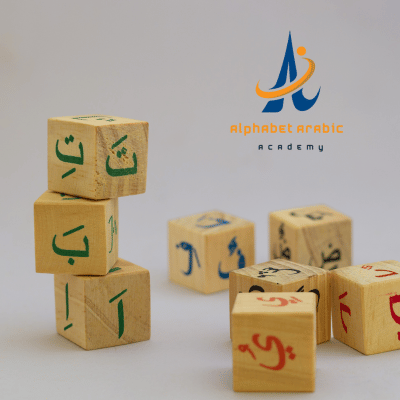
Online Arabic classes for beginners For all ages, it is very easy to become a professional and fluent in the Arabic language because you will learn with native Arabic speaking teachers from Egypt at very competitive prices and flexible times. Learning the Arabic language has never been easier than it is with us now. Just send us a message via WhatsApp or email and set your study date.
Introduction to Online Arabic Classes Today
Mastering Arabic has become simpler than ever. Now, you can access beginner-friendly courses online. For those interested in learning Modern Standard Arabic, improving conversational skills, or explore the holy Qur’an, online website provide a flexible way to start. Moreover, with structured lessons, live tutors, and interactive learning tools, beginners can quickly develop their reading, writing, and speaking abilities. Consequently, learning Arabic online is both practical and efficient.
Benefits of Learning Arabic Online Effectively
- Flexibility: Study at your own pace and schedule, making learning more manageable. Furthermore, you can adjust your study plan as needed.
- Interactive Lessons: Engage with videos, audio, and quizzes, which help with retention. Additionally, interactive exercises make the learning process enjoyable.
- Expert Instruction: Learn from native Arabic speakers and professional tutors who guide you effectively. As a result, you receive proper pronunciation and cultural insights.
- Personalized Learning: Courses are tailored to your level and goals, ensuring better progress. Thus, you can focus on areas that need improvement.
- Affordable Pricing: Access quality education without high costs, making learning accessible to all. Consequently, you get excellent value for your money.

Finding Best Arabic Classes Online Easily
Criteria for Choosing Online Courses Wisely
- Course Structure: Look for well-organized lessons that cover vocabulary, grammar, and pronunciation. Additionally, structured lessons help learners stay on track.
- Teacher Expertise: Ensure courses are taught by certified and native Arabic speakers to improve accuracy. As a result, you gain confidence in your speaking ability.
- Learning Tools: Platforms should offer videos, live sessions, and practice exercises for better understanding. Furthermore, interactive tools enhance engagement and comprehension.
- User Reviews: Check ratings and feedback from other learners before making a decision. Consequently, you can avoid low-quality courses.
- Affordable Pricing: Choose courses that fit your budget, like those from Alphabet Arabic Academy. Therefore, you can obtain high-quality education at a reasonable price.
Top Online Arabic Classes for Beginners Quickly
Platforms Offering Beginner Classes Reliably
- Alphabet Arabic Academy: Affordable, interactive, and structured courses. Moreover, their live classes enhance engagement.
- Duolingo: A gamified approach that helps in learning Arabic vocabulary easily. Additionally, it is free to use.
- Memrise: Ideal for learning Arabic phrases and conversational skills effectively. As a result, users develop real-life communication abilities.
- AmazingTalker: Personalized lessons with private tutors, making learning more efficient. As a result, students get personalized attention.
- Madinah Arabic: Emphasizes grammar and Qur’anic Arabic, aiding in religious studies. Hence, students develop a robust understanding of classical Arabic.

Features of Effective Arabic Classes Online Thoroughly
Interactive Learning Tools Smartly
- Live Sessions: Engage in real-time lessons with native speakers to improve fluency. Additionally, live interactions help with pronunciation.
- Audio & Video Lessons: Engaging content helps with better retention and understanding. Moreover, repetition aids memory.
- Quizzes & Flashcards: Reinforce vocabulary and grammar in an interactive way. Moreover, consistent practice leads to better retention.
- Mobile Apps: Study on the go with convenient access to lessons. Consequently, you never miss a study session.
Cost of Online Arabic Classes for Beginners Affordably
Understanding Pricing Models Clearly
- Monthly Subscriptions: Some platforms charge a recurring fee for continuous access. Additionally, this can be more budget-friendly for long-term learners.
- One-Time Payments: Purchase a complete course with lifetime access for flexibility. Consequently, you can learn at your own pace.
- Hourly Rates: Private tutors may charge per session, which can be budget-friendly. Thus, learners can control their spending.
- Trial Lessons: Try before committing with free or discounted sessions to check quality. As a result, you can assess if the course meets your needs.
- Affordable Courses: Alphabet Arabic Academy offers beginner courses starting from just $40. Therefore, quality learning is accessible to all.
How to Stay Motivated Online Consistently
Setting Achievable Goals Easily
- Daily Practice: Spend at least 15-30 minutes learning to build consistency. Additionally, establishing particular objectives ensures learners remain engaged.
- Small Milestones: Celebrate progress in vocabulary, reading, and speaking. As a result, learners remain motivated.
- Participate in online communities: Get involved with platforms such as Reddit’s r/learn_arabic to remain inspired. Consequently, you get support from fellow learners.
- Enroll in Fun Classes: Interactive and engaging lessons help maintain motivation. Additionally, gamified learning makes studying enjoyable.
Technology Requirements for Online Classes Efficiently
Essential Devices and Software Conveniently
- Laptop or Tablet: Allows for better interaction and video lessons. Additionally, bigger screens improve visibility.
- Stable Internet: Ensures uninterrupted learning sessions. Furthermore, a good connection enhances the experience.
- Headphones & Microphone: Improve audio clarity during live sessions. Consequently, communication is more effective.
- Language Apps: Use tools like ArabicPod, Memrise, or Duolingo for additional practice. Thus, learners can reinforce their knowledge anytime.
Start Learning Today – Enroll Now Immediately!
Eager to start your Arabic learning adventure? Alphabet Arabic Academy offers high-quality, affordable online Arabic classes for beginners. Whether you want to learn for travel, business, or religious purposes, our structured courses ensure rapid progress. Moreover, our expert tutors provide personalized guidance. Schedule your trial lesson now and embark on your journey to fluency!
Frequently Asked Questions on Beginner Arabic Lessons Online
What Are Online Arabic Classes?
Imagine a doorway to a vibrant new world; these classes are your gateway to learning Arabic.
Moreover, they combine live sessions, fun video tutorials, and engaging audio clips.
Next, you learn the alphabet, simple vocabulary, and everyday phrases.
Furthermore, each session mixes detailed instructions with quick drills, keeping the learning dynamic.
Who Can Join?
These classes are open to everyone. Furthermore, kids, adults, and university students are all welcome.
Also, even beginners or those with a bit of knowledge can find a course that suits them.
In addition, native teachers guide you every step of the way.
What Do Lessons Cover?
The lessons encompass a wide array of subjects. Firstly, you master the Arabic alphabet and essential vocabulary.
Moreover, you practice everyday phrases and basic grammar.
Additionally, some courses introduce modern standard Arabic along with dialects like Egyptian and Levantine.
Furthermore, a few classes even include Quran recitations to deepen your cultural understanding.
How Are Courses Structured?
Courses are structured into different levels. Initially, you start with beginner lessons and then move to intermediate and advanced stages.
Moreover, each level is filled with interactive exercises that keep you involved.
Also, a mix of long, detailed sessions and short, energetic drills makes learning flexible and fun.
Which tools facilitate your learning?
You have numerous helpful tools available. For example, apps like Duolingo, Memrise, and Amazingtalker make practice enjoyable.
Additionally, websites such as Arabiconline and Arabicpod provide guided lessons.
Furthermore, online communities on Reddit and helpful YouTube tutorials offer extra support.
How Do I Choose a Course?
Start by considering your personal goals and schedule.
Also, try trial lessons to test the teaching style and see if it fits you.
In addition, check ratings and prices before making a decision.
Therefore, choose a course that offers live sessions, clear levels, and personalized feedback to match your learning pace.
Can These Courses Improve My Speaking?
Absolutely, they can boost your speaking skills.
Moreover, live sessions allow you to converse with native teachers.
Also, some lessons are short enough for busy days, while others provide in-depth practice.
Consequently, this mix builds your confidence and enhances your listening skills too.
How Long Are the Lessons?
Lesson lengths vary according to your needs.
For instance, some are quick, bite-sized sessions perfect for a busy day.
In addition, others are longer, covering vocabulary, grammar, and conversation in more depth.
Thus, the flexibility ensures you can learn at a pace that fits your schedule.
What Extra Features Are Offered?
Extra features make the learning experience even richer.
For example, many courses include interactive images and mobile apps with engaging tutorials.
Moreover, study guides, audio files, and video lessons further enhance your skills.
Additionally, some courses even offer specialized content such as Quran studies.
What’s Next After Beginner Classes?
Once you master the basics, your journey continues.
Furthermore, you can advance to intermediate and then to advanced levels.
Also, these higher levels delve into complex grammar, sophisticated vocabulary, and nuanced dialects like Egyptian and Levantine.
Finally, each new step brings you closer to confidently speaking Arabic.
Enjoy your journey into Arabic—a path filled with discovery, growth, and exciting challenges. Happy learning!


